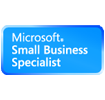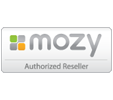Infoencrypt
Infoencrypt is a free, web-based service for easily securing your messages. Simply enter the text of your message and the encryption password that will be used for both encryption and decryption. The program encrypts your message using a strong encryption algorithm, making it secure to send. Anyone who intercepts the encrypted message without the password will not be able to read the original message.
SafeGmail
SafeGmail is a free extension for Google Chrome that allows you to send encrypted emails to anyone. The messages are encrypted and decrypted within the browser and remain encrypted in both the sender’s and receiver’s email inboxes. The messages also automatically expire after a random amount of time.
RMail
RMail allows you to easily send emails with end-to-end security and compliance. Send encrypted email from your current email address (10 free messages allowed per month) and automatically receive a Registered Receipt™ record proving encrypted delivery and compliance with open tracking.
Sendinc
Sendinc is a web-based service that makes it safe and simple to transmit sensitive information via email. You and your recipients can use Sendinc for free. No software is required.
Sendinc secures your message by ensuring that your data remains encrypted from the time it leaves your computer through the time your recipients retrieve it. At no point in the process is your message data transmitted or stored in an unencrypted format. Sendinc further ensures the safety of your messages by verifying your recipients are in fact your intended recipients.
Messages are encrypted with a powerful randomly-generated encryption key that is emailed to your recipients in the form of a link. Sendinc does not save a copy of your recipients’ encryption keys and your message can not be decrypted without the key – not even by Sendinc. This means only your recipients can decode the message data.
Hushmail
Hushmail is a secure web-based free email service that looks and feels just like any other web-mail site, but adds strong encryption to your emails to protect your secrets from prying eyes. It uses standards-compliant encryption and provides mobile access (Android, iPhone, BlackBerry, etc.).
Lockbin
Lockbin is a free web application for sending private email messages and files. Lockbin ends message persistence, which means your email message will not be backed up on email servers or stored in backup files. Network sniffers can also spy on your email traffic while in transit. Use Lockbin to obscure the content of your message and avoid these hazards to your privacy.
No registration is required to use Lockbin. Your message and file attachments are protected by strong AES-256 bit encryption and your secret password. You invent the password and deliver it to the recipient using a different secure method, not email.
iSafeguard
iSafeguard is a software package that provides easy-to-use and highly secure encryption and digital signature solutions for everyone from big companies to individual users. The software allows you to sign and encrypt files, folders, and emails and verify digital signatures and countersignatures. It provides a secure text editor and allows you to wipe files, folders, and free disk space. It also integrates with the Windows shell.
The freeware edition of their software is for non-business, individual users. Although it lacks some of the features the enterprise and professional editions have it does provide powerful encryption and digital signatures capabilities, and security is as strong as the enterprise and professional editions.
Hushmail
Hushmail is a secure web-based free email service that looks and feels just like any other web-mail site, but adds strong encryption to your emails to protect your secrets from prying eyes. It uses standards-compliant encryption and provides mobile access (Android, iPhone, BlackBerry, etc.).
Paid plans are also available that provide additional storage, unlimited email aliases, dedicated technical support, and desktop access.
Crypto Anywhere
Crypto Anywhere is a program that is small enough to fit on a USB flash drive, providing free secure email on the go. Don’t have a computer yourself but want to protect your web based e-mail at your local internet cafe? Crypto Anywhere is for you. If you run Crypto Anywhere from a USB flash drive, you can encrypt your email without even installing software on your workstation. With Crypto Anywhere you can send and receive secure email to and from anyone with an email account – the recipients do not have to have Crypto Anywhere themselves.
Crypto Anywhere is free for personal and corporate use.
The information is the blog post was accumulated from multiple sources but especially http://www.howtogeek.com/










